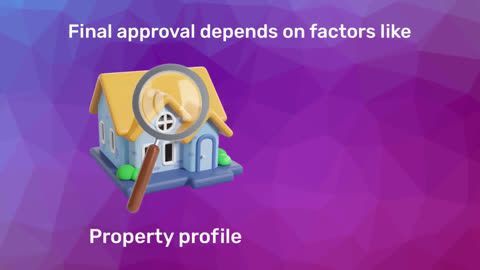- Simplicity and convenience: One of the primary advantages of the standard deduction is its simplicity. Taxpayers do not need to keep track of every deductible expense throughout the year. Instead, they can claim a set amount, reducing the complexity and paperwork involved in filing taxes.
- Increased tax savings: For many taxpayers, the standard deduction results in greater tax savings compared to itemising deductions. This is especially true for individuals with fewer deductible expenses, such as those without significant home loan interest, medical expenses, or charitable contributions.
- Automatic adjustment: The standard deduction is adjusted periodically to account for changes in the cost of living, ensuring that taxpayers' deductions remain relevant and beneficial over time. This adjustment helps maintain the value of the deduction, providing ongoing tax relief.
- Accessibility for all taxpayers: The standard deduction is available to all taxpayers, regardless of their income level or specific financial situation. This broad accessibility makes it an essential tool for maximising tax benefits across a wide range of scenarios.
Planning major financial decisions like buying a home alongside tax savings can create a comprehensive wealth-building strategy. With the money you save through standard deduction and other tax benefits, you could be closer to homeownership than you think. Check your home loan eligibility with Bajaj Finserv today. You may already be eligible, find out by entering your mobile number and OTP.
Documents required for standard deduction
No proof or supporting documents are needed specifically to claim the standard deduction. It is automatically granted when you declare salary or pension income in your return.
However, for overall tax filing, you should keep these documents ready:
Bank statements for the financial year
Interest or FD income statements
TDS certificates from your employer or bank
Investment proof (for other deductions, if any)
Form 26AS and Annual Information Statement (AIS)
Although not required for the standard deduction itself, these documents ensure accuracy while filing your ITR and claiming other benefits, if eligible.
Maximizing your tax benefits with the standard deduction
1. Combining standard deduction with Section 80C investments
Investing in instruments covered under Section 80C of the Income Tax Act is an effective way to reduce your taxable income. Popular options include Public Provident Fund (PPF), Employee Provident Fund (EPF), National Savings Certificate (NSC), and life insurance premiums. The maximum deduction allowed under Section 80C is Rs. 1.5 lakh, and when combined with the standard deduction, it can significantly lower your overall tax liability.
2. Utilising health insurance under Section 80D
Health insurance premiums paid for yourself, your family, and your parents are deductible under Section 80D. The deduction limit is Rs. 25,000 for premiums paid for yourself, your spouse, and children, and an additional Rs. 25,000 for premiums paid for parents. If the parents are senior citizens, the limit increases to Rs. 50,000. This can provide substantial tax savings while ensuring financial protection against medical emergencies.
3. Leveraging education loan interest deduction under Section 80E
The interest paid on an education loan for higher studies is deductible under Section 80E. There is no maximum limit for this deduction, and it is available for a period of eight years or until the interest is paid off, whichever is earlier. This can significantly reduce your taxable income if you are repaying an education loan.
4. Home loan interest deduction under Section 24(b)
While the standard deduction is beneficial, there are circumstances where itemising deductions can lead to greater tax savings. One such scenario is home loan interest deduction under Section 24(b). Interest paid on a home loan is deductible under Section 24(b) up to Rs. 2 lakh per annum for self-occupied properties. If you have a second home or rented property, the entire interest amount is deductible without any limit, provided it is rented out.
If you're considering purchasing your first home or investment property, the tax benefits from home loan interest can significantly enhance your overall tax savings strategy. Bajaj Finserv offers competitive home loan rates that make homeownership more affordable while maximising your tax deductions. Check your loan offers from Bajaj Finserv today. You may already be eligible, find out by entering your mobile number and OTP.
5. Charitable contributions under Section 80G
Contributions made to specified charitable institutions and relief funds are deductible under Section 80G. Depending on the institution, you can claim a deduction of 50% or 100% of the donated amount, subject to certain limits. By keeping track of these opportunities, you can enhance your overall tax strategy while contributing to a good cause.
Standard deduction for pensioners
Pensioners between 60 and 80 years are considered senior citizens and enjoy certain tax benefits. If you receive a regular pension from your former employer, it is treated as salary income and qualifies for a standard deduction.
Amount of Deduction:
Rs. 50,000 under the old regime
Rs. 75,000 under the new regime (from FY 2024–25 onwards)
This deduction helps reduce the taxable income of pensioners, offering much-needed relief in retirement.
However, in the case of family pensions (received by legal heirs of deceased pensioners), the income is taxed under “Income from Other Sources.” Thus, it is not eligible for the standard deduction under Section 16(ia). Instead, Budget 2025 has increased the fixed deduction for family pensioners from Rs. 15,000 to Rs. 25,000.
This update acknowledges the financial needs of families who rely on inherited pensions and aims to provide additional relief under the new tax regime.
In short, retired individuals drawing a pension directly from their employer can claim standard deduction, while family pensioners have a different benefit structure under the law.
Example of standard deduction under old tax regime
Particulars
|
Amount
|
Gross salary income
|
Rs. 8 lakh
|
Less: standard deduction (old regime)
|
Rs. 50,000
|
Net salary income or gross taxable income
|
Rs. 7.5 lakh
|
Less: deduction under Section 80C
|
Rs. 1.5 lakh
|
Net taxable income
|
Rs. 6 lakh
|
Example of standard deduction under new tax regime
Particulars
|
Amount
|
Gross salary income
|
Rs. 8 lakh
|
Less: standard deduction (new regime)
|
Rs. 75,000
|
Net salary income or gross taxable income
|
Rs. 7.25 lakh
|
Less: deduction under Section 80C
|
Zero
|
Net taxable income
|
Rs. 7.25 lakh
|
How is the standard deduction calculated in the case of multiple employers?
The standard deduction remains fixed regardless of how many employers you’ve worked for during the year.
Let’s say you switch jobs within the financial year and have two Form-16s—one from each employer. You do not get to claim the deduction twice. The total standard deduction allowed for the year remains:
Rs. 50,000 under the old tax regime
Rs. 75,000 under the new tax regime
So even if you worked for multiple companies, you can only subtract the standard deduction once while filing your Income Tax Return.
Ensure that while combining income from multiple jobs, you apply the standard deduction only once from the total salary. This helps prevent errors and ensures correct tax calculations.
History of the standard deduction
The standard deduction was first introduced in 1974 to streamline tax filings for salaried taxpayers. Initially based on a percentage of income, it was revised many times before being scrapped in 2005 by Finance Minister P. Chidambaram, who felt it had become outdated.
After more than a decade, the deduction was reintroduced in Budget 2018 at Rs. 40,000, replacing earlier exemptions like transport allowance and medical reimbursements. In Budget 2019, this amount was increased to Rs. 50,000, bringing relief to millions of salaried individuals.
Although not available under the new tax regime when it was first introduced, Budget 2023 allowed standard deduction within the new system, maintaining the Rs. 50,000 limit.
In Budget 2024, a major update was announced: the standard deduction under the new regime would increase to Rs. 75,000 starting from FY 2024-25. Meanwhile, the old regime continues to offer a deduction of Rs. 50,000.
Despite being a simple concept, the standard deduction plays a powerful role in reducing taxable income. It’s advisable to consult a tax expert to ensure you make the most of all deductions, including this one, and minimise your tax burden effectively.
Exploring home loans
For those considering purchasing a home, a home loan can provide significant tax benefits through mortgage interest deductions. Additionally, homeownership often comes with other financial advantages, such as property tax deductions and potential capital gains exemptions when selling the home.
When looking for a home loan, it's essential to choose a reputable and reliable lender. Bajaj Housing Finance offers competitive home loan options with attractive home loan interest rates and flexible repayment terms. By securing a Bajaj Housing Finance Home Loan, you not only benefit from favourable loan conditions but also gain access to potential tax deductions on mortgage interest, further maximising your tax savings.
Conclusion
Maximizing your tax benefits through the standard deduction involves a strategic approach to financial planning. By understanding the advantages of the standard deduction and incorporating other tax-advantaged financial products, you can significantly reduce your taxable income and enhance your overall financial health.
Incorporating tools like Section 80C investments, health insurance under Section 80D, education loan interest under Section 80E, and home loans can further optimize your tax strategy. When considering a home loan, Bajaj Housing Finance Home Loan stands out as an excellent choice, offering competitive rates and terms that align with your financial goals. You might already be eligible, check your offers now by entering your mobile number and OTP.
By leveraging these strategies and products, you can make the most of the standard deduction and ensure a more secure and prosperous financial future.






